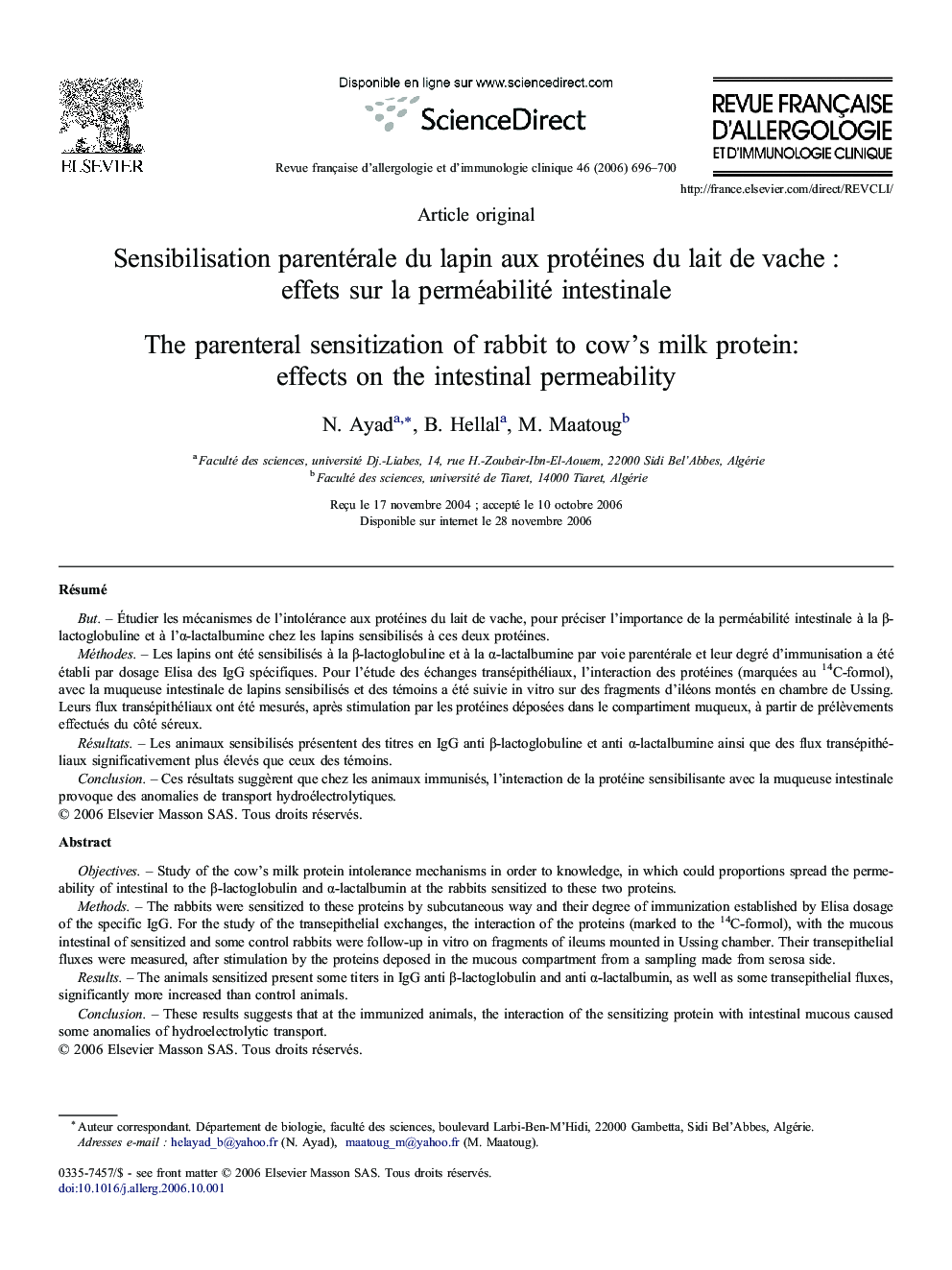| Article ID | Journal | Published Year | Pages | File Type |
|---|---|---|---|---|
| 2770431 | Revue Française d'Allergologie et d'Immunologie Clinique | 2006 | 5 Pages |
RésuméButÉtudier les mécanismes de l'intolérance aux protéines du lait de vache, pour préciser l'importance de la perméabilité intestinale à la β-lactoglobuline et à l'α-lactalbumine chez les lapins sensibilisés à ces deux protéines.MéthodesLes lapins ont été sensibilisés à la β-lactoglobuline et à la α-lactalbumine par voie parentérale et leur degré d'immunisation a été établi par dosage Elisa des IgG spécifiques. Pour l'étude des échanges transépithéliaux, l'interaction des protéines (marquées au 14C-formol), avec la muqueuse intestinale de lapins sensibilisés et des témoins a été suivie in vitro sur des fragments d'iléons montés en chambre de Ussing. Leurs flux transépithéliaux ont été mesurés, après stimulation par les protéines déposées dans le compartiment muqueux, à partir de prélèvements effectués du côté séreux.RésultatsLes animaux sensibilisés présentent des titres en IgG anti β-lactoglobuline et anti α-lactalbumine ainsi que des flux transépithéliaux significativement plus élevés que ceux des témoins.ConclusionCes résultats suggèrent que chez les animaux immunisés, l'interaction de la protéine sensibilisante avec la muqueuse intestinale provoque des anomalies de transport hydroélectrolytiques.
ObjectivesStudy of the cow's milk protein intolerance mechanisms in order to knowledge, in which could proportions spread the permeability of intestinal to the β-lactoglobulin and α-lactalbumin at the rabbits sensitized to these two proteins.MethodsThe rabbits were sensitized to these proteins by subcutaneous way and their degree of immunization established by Elisa dosage of the specific IgG. For the study of the transepithelial exchanges, the interaction of the proteins (marked to the 14C-formol), with the mucous intestinal of sensitized and some control rabbits were follow-up in vitro on fragments of ileums mounted in Ussing chamber. Their transepithelial fluxes were measured, after stimulation by the proteins deposed in the mucous compartment from a sampling made from serosa side.ResultsThe animals sensitized present some titers in IgG anti β-lactoglobulin and anti α-lactalbumin, as well as some transepithelial fluxes, significantly more increased than control animals.ConclusionThese results suggests that at the immunized animals, the interaction of the sensitizing protein with intestinal mucous caused some anomalies of hydroelectrolytic transport.
